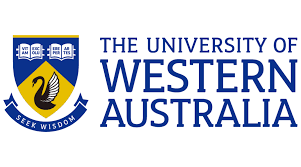University of Western Australia: App may take the bite out of dental visit for preschool kids
A new study is investigating ways in which an app that takes photographs of young children’s teeth and allows remote screening by dental professionals might be used as an alternative method of dental care.
The Dental Screening Study is a part of the ORIGINS Project, which is following 10,000 families across a decade to improve child and adult health.
The collaborative study is being carried out by researchers from The University of Western Australia, Telethon Kids Institute and Joondalup Health Campus, led by Dr Somayyeh Azimi and Dr Jilen Patel and the CSIRO’s Australian eHealth Research Centre represented by Dr Mohamed Estai.
Dr Patel, a specialist paediatric dentist and senior lecturer at UWA, said the study was prompted by the need for tele-screening of tooth decay and dental pathology during the COVID-19 pandemic.
“Tooth decay remains one of the most common diseases in young children, with 40 per cent of pre-schoolers experiencing dental disease,” he said.
“Causes can range from sugary drinks and snacks and poor oral hygiene through to limited oral health literacy and access to care. Often the first signs of disease go undetected and, when left unmanaged, can lead to pain and infection and adverse impacts on nutrition, schooling and sleep.”
Dr Patel said the research, being carried out on three-year-olds as part of ORIGINS, involved parents taking still images of their child’s mouth with their smartphones, using the Tele-dental app developed by the CSIRO ehealth Research Centre.
Dental app
“The photos are then sent to a secure online server where a dental practitioner can evaluate the images in near real-time and advise on any necessary treatment and care pathways, all while the child is in the comfort of their own home,” Dr Patel said.
The feasibility, sensitivity and specificity of the app in comparison to conventional clinical examination will be investigated as part of the research which will also include feedback from parents.
“It’s non-invasive and potentially less stressful for young children and could be used as part of tele-health, in the same way that people see their GP over a phone or video call, as a way to support parents in remote or rural areas or for those who find it difficult to access care,” he said.
Dr Patel said the study, funded by the WA Department of Health through a COVID-19 Innovation FHRI Focus Grant, was particularly relevant within the context of parents accessing care during the pandemic.

